I saw the northern lights during the historic solar storm. I was surprised by how misleading the photos were.
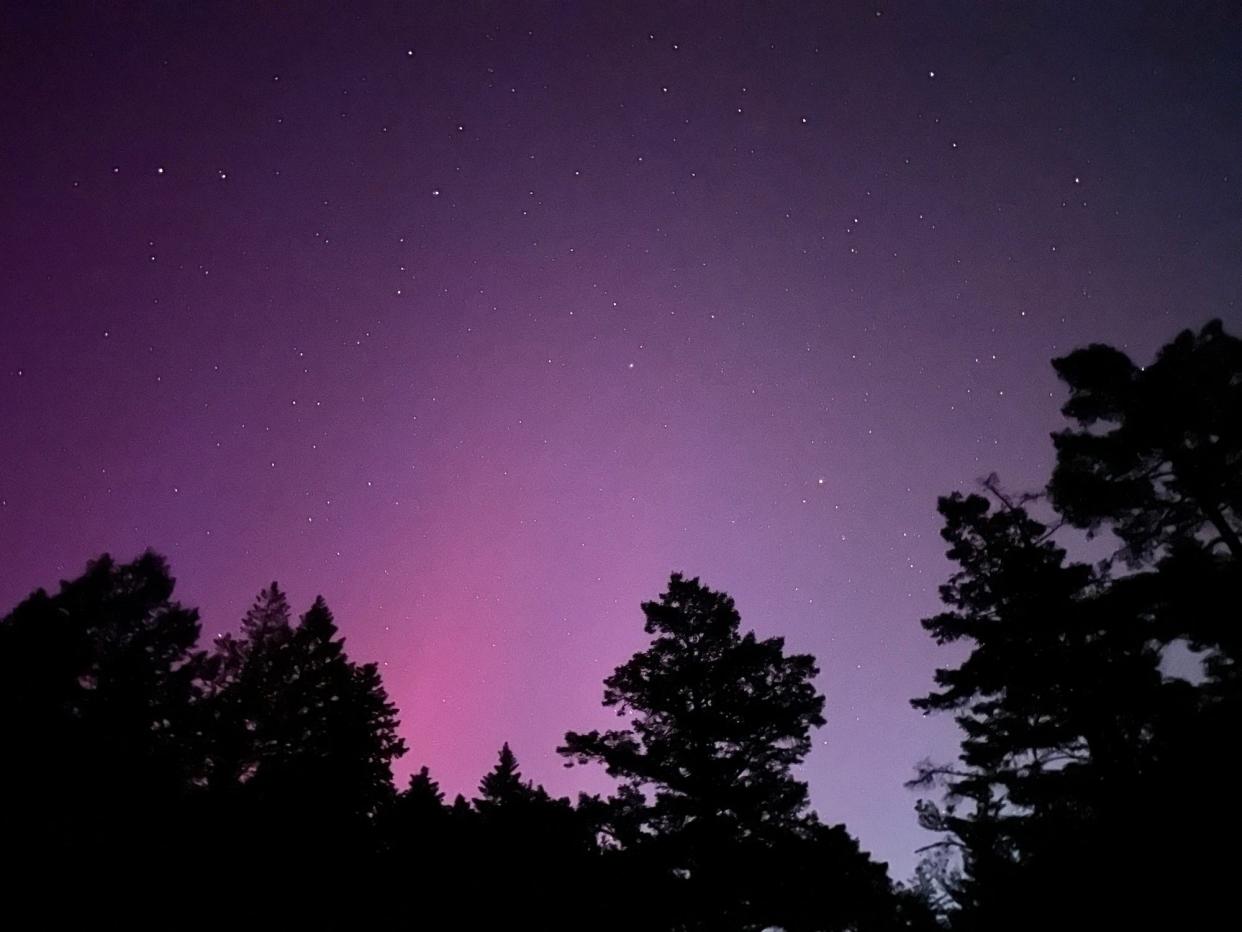
I saw the northern lights just outside San Francisco on Friday during a rare geomagnetic storm.
I was surprised that my phone camera captured a vibrant pink explosion while I saw a dull red glow.
Photos of the aurora borealis can be misleading, but it's still worth seeing.
I saw the northern lights glowing in the California skies last weekend — but just barely.
I couldn't miss the historic opportunity to see the aurora borealis, the dancing, colorful lights that usually only shimmer in Arctic skies.
A giant cluster of sunspots and a series of solar eruptions caused an extreme geomagnetic storm on Friday — the first one since 2003.
Over the weekend, this solar activity brought the northern lights south, as far as Arkansas, and gave us a rare chance to see it in California.
So late Friday night, my friends and I drove to Mount Tamalpais State Park, about 40 minutes north of San Francisco. It was the darkest spot on a hill within an hour's drive, according to an online light-pollution map we checked.
As soon as we got out of the car, two of us pointed at a patch of sky above the parking lot trees and said, "Is that it?"
The night sky had a faint reddish tinge. The color was so subtle that we thought we might be imagining it. So, as we walked up the path toward the top of the hill, we paused to take some photos. That's when we knew we were seeing the northern lights.

With the naked eye, we wouldn't have noticed the aurora if we didn't know it was there. But the photos we took with our iPhones made it seem as if the sky was an explosion of bright pink.
Why photos make the northern lights look more colorful than they are
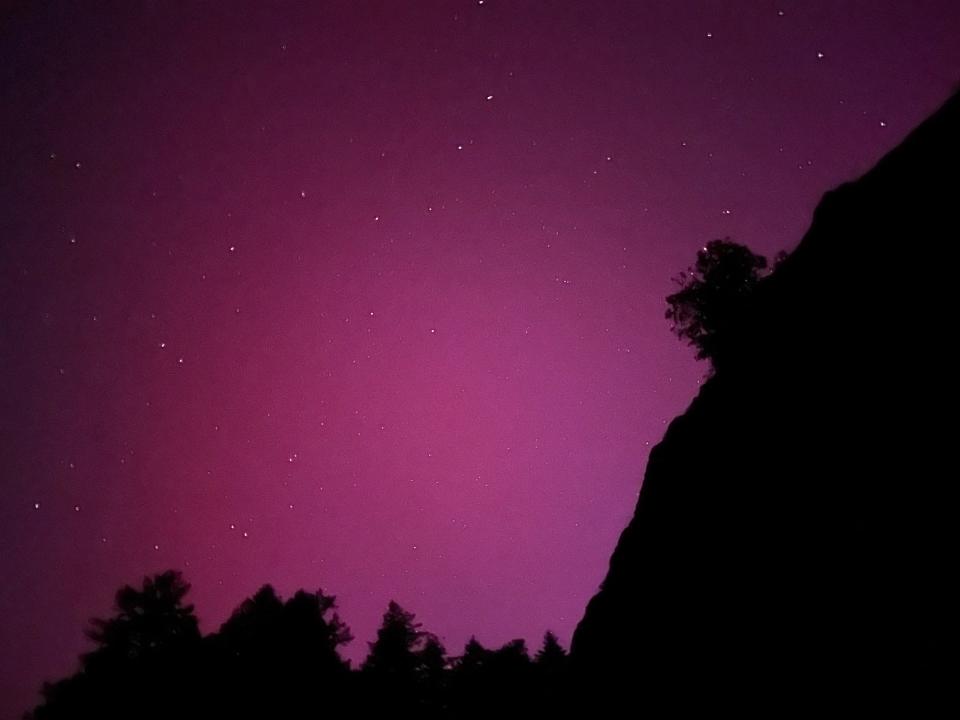
The aurora occurs when activity on the sun sends a flood of solar material washing over Earth.
This supercharged solar wind is packed with electrically charged particles and magnetic fields. Our planet's own magnetic field channels all that solar stuff toward the North and South poles, where the electrons heat up the gases in our atmosphere and cause them to glow like fluorescent lightbulbs.
The solar storm on Friday bombarded the planet's magnetic field so much that its particles flooded further south, past the Arctic, to create the northern lights I saw.
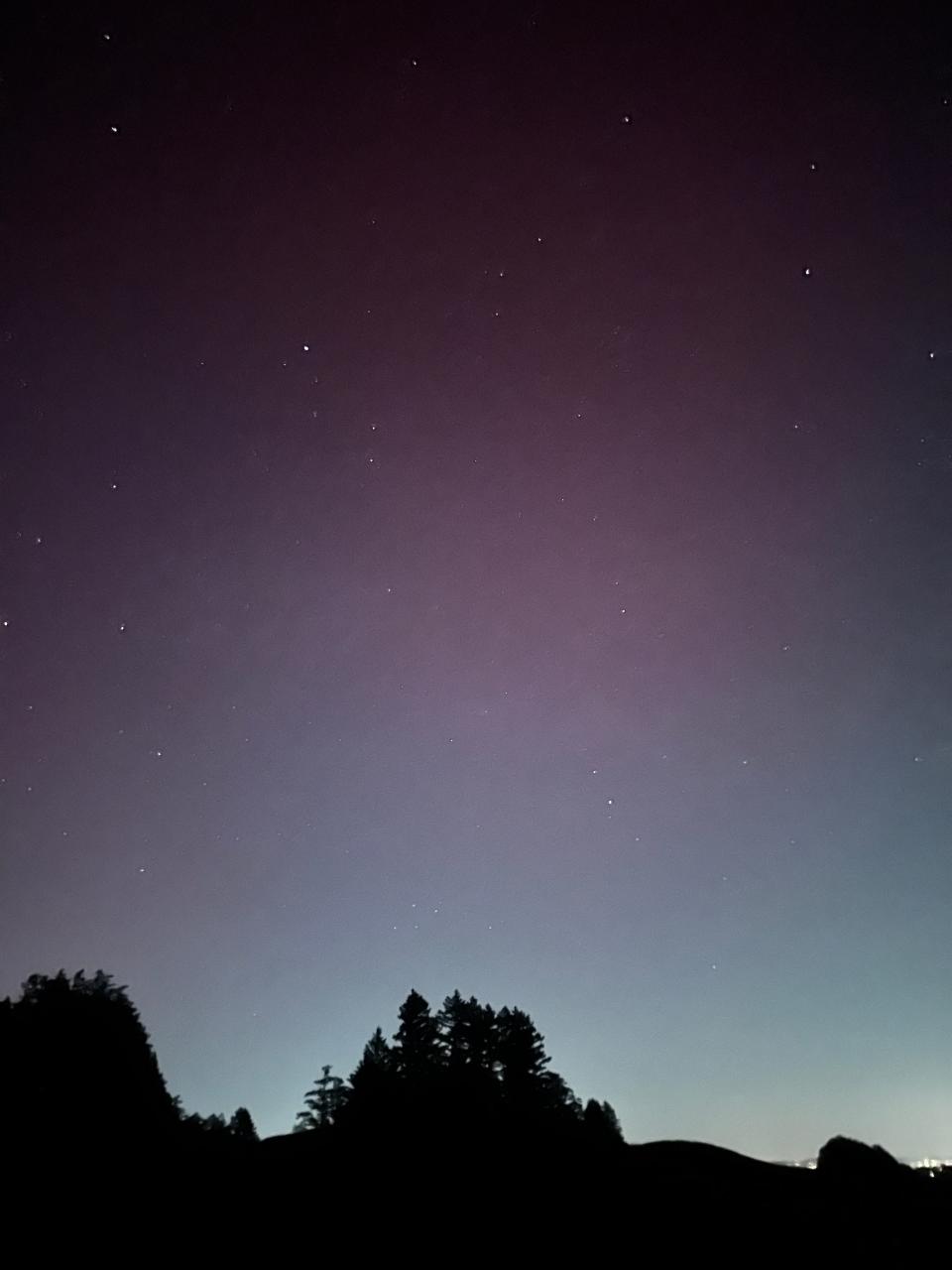
But cameras are more sensitive to the whole range of light than our eyes are, especially in the dark, when our eyes tend to tune out color.
For example, my iPhone has an automatic long-exposure mode for dark settings. When I take a photo at night, it takes multiple snapshots for three seconds, then stitches them together, allowing the camera to capture even more light, which is why my aurora photos look more spectacular than what I was seeing.
It also matters where you are. I was near a major source of light pollution — the city of San Francisco — which probably drowned out a lot of the aurora.
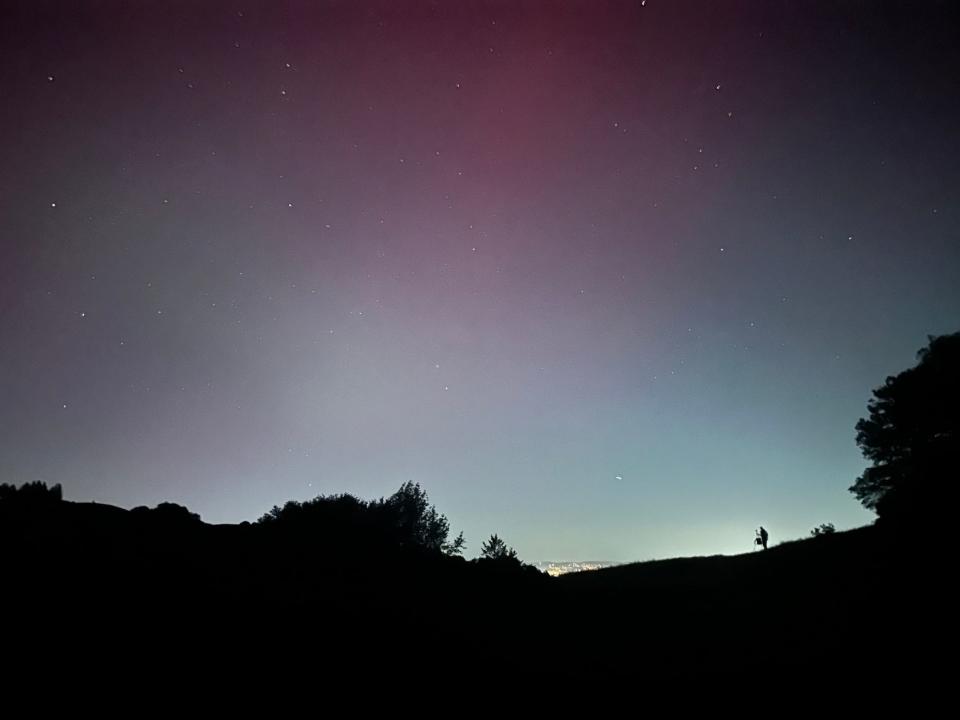
Compare that with the below picture that the astrophotographer Dan Bartlett took about 200 miles east of me, in June Lake, California, near Yosemite. He was at roughly the same latitude but under much darker skies.
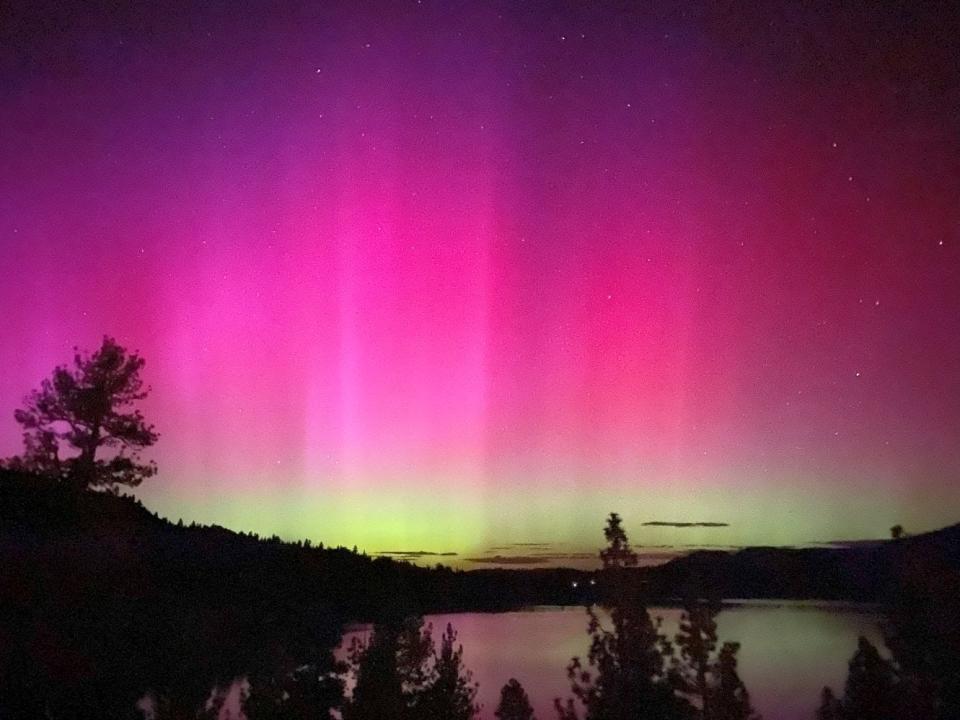
While he told me he spotted spikes and waves changing second by second with his naked eye, all I could see was a diffuse glow.
Cameras may also lie to you about the aurora's colors
Another pitfall of seeing the aurora through a phone is that the colors aren't always true.
The color of an aurora indicates its altitude, as well as the type of molecules in the atmosphere that are creating it. Green, for example, usually comes from oxygen atoms at lower altitudes in the atmosphere. Pink or red can indicate high-altitude oxygen or nitrogen at very low altitudes.
My phone also picked up a field of purple in some images, which could indicate low-altitude nitrogen — but that could have been a trick of the pixels.
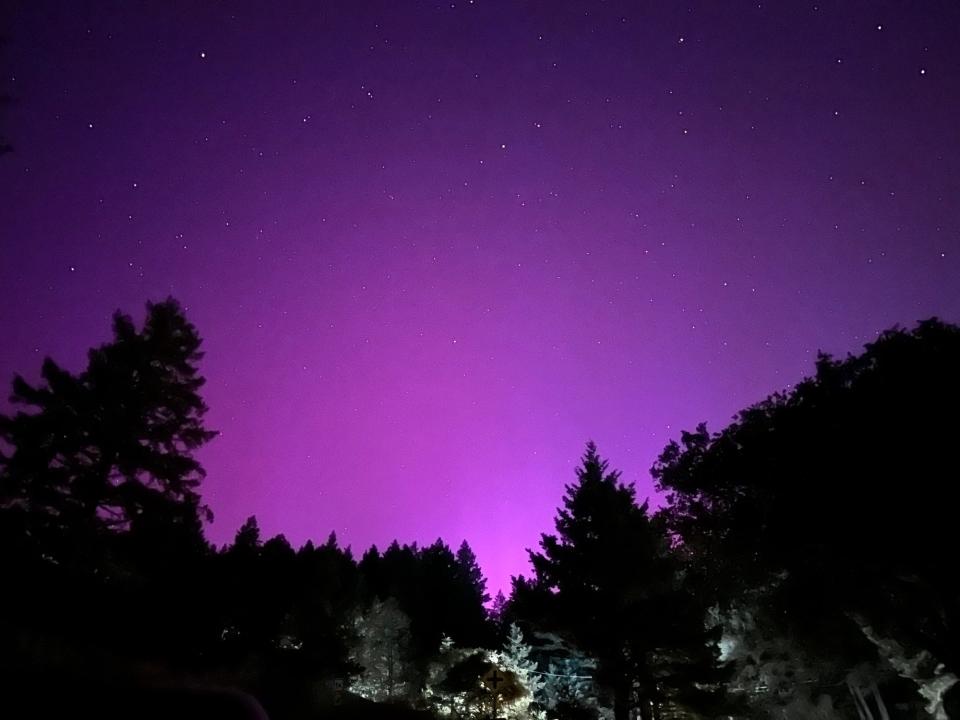
"Obviously, screens do not always reproduce the natural colours reliably," Maria Walach, a space-plasma physicist who researches auroras at Lancaster University, told Business Insider in an email. "Additionally, you can get all sorts of colours from mixing and different viewing angles, which sometimes makes it tricky to tell."
And, of course, photos you see online could always have been edited after the fact.
"Don't be misled. I mean, the camera does its own processing, but you know that you could go in and change that processing level to your tastes," Bartlett said. "You could saturate the colors and make it grotesque; you could do anything you want with it."
Go see the aurora, just know it might be faint
This rare event isn't over. More eruptions on the sun are sending electromagnetic material our way, meaning much of the northern US could get the aurora again on Monday night.
There may be even more opportunities this year. After all, the sun is close to the maximum activity level that it reaches every 11 years, meaning there'll probably be more solar eruptions that bring the aurora to unusual latitudes.
I think it's absolutely worth seeing, even if it's faint like mine was. I'm glad I stayed out until 3 a.m. to catch it.
But if you're in the middle of the US or at a similar latitude elsewhere on Earth, don't expect to see the bright pink and green glow that photos all over social media are showing. They can be a bit misleading.
Read the original article on Business Insider

